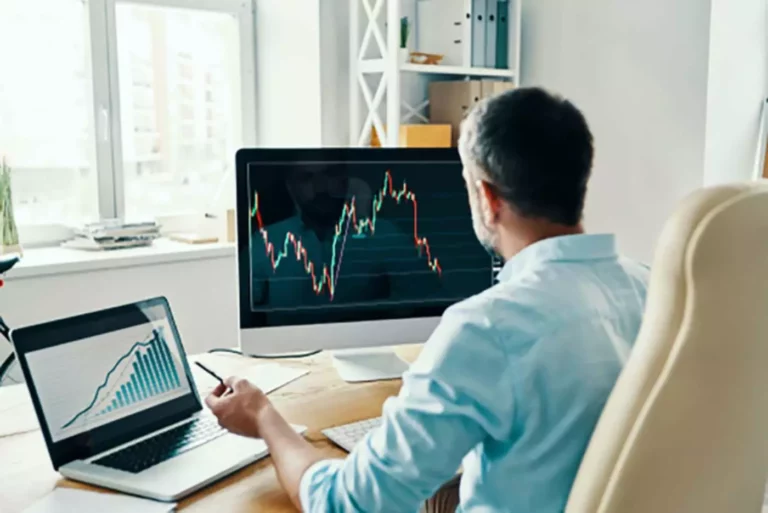Content
Regulation plays an important role in ensuring that buy side liquidity vs sell side liquidity sell-side liquidity provision is conducted in a fair and transparent manner. Effective trade management is crucial to maximizing profits and minimizing risks. After entering the trade, monitor the market for any signs of reversal or significant resistance. Adjust your stop loss to protect profits as the trade moves in your favor, and be prepared to exit the trade if the market conditions change. Some people say price movements are all about supply and demand, but supply and demand for what? In futures markets, contracts get created and destroyed as people trade, so supply is infinite.
How To Identify Liquidity Zones

Sell-side analysts aim to give deeper insights into trends and projections; they issue reports and recommendations which are used to make investment decisions for clients. Market indicators are best defined as quantitative tools used by investors or traders to provide an approximation of what’s in store for future market movement. The major news can trigger sharp moves as the market resumes an established trend or if the range eventually breaks out of indecision. In quiet periods with no https://www.xcritical.com/ big news or events, the ranges widen in a free test of wills on both sides.
Market Turmoil and Central Banks
The liquidity providers may have a vested interest in the assets they are trading, which can influence their behavior. This activity can impact the market by creating information asymmetry and distorting prices. In recent years, there has been a trend towards increased fragmentation, with trading occurring across multiple venues. While this has led to increased Decentralized autonomous organization competition and reduced trading costs, it has also made it more challenging to maintain market liquidity.
Step 1: Identify the Market Structure
- Professionals focused on the sell side often have jobs in investment banking, sales and trading, equity research, market making, and commercial or corporate banking.
- These orders create liquidity pools that attract institutional sell orders, often leading to price reversals or retracements.
- They do this by providing bid and ask prices for securities, which helps determine the fair value of these securities.
- Recognizing sell-side liquidity is crucial for traders looking to enter long positions, as it indicates areas where the market might find support.
- As the market changes pace from time to time, it’s the liquidity that gives you the heads-up that this is happening.
- Investment bankers and corporate finance advisors play the same role for private issues of debt and equity.
- They play a vital role in ensuring that there is a constant supply of buyers and sellers, thereby enhancing market liquidity.
This can cause liquidity to dry up quickly, making it harder for other traders to buy or sell assets. Additionally, HFT firms may engage in predatory trading practices, such as front-running or spoofing, which can harm market liquidity by discouraging other traders from participating in the market. Despite its controversial reputation, HFT has several benefits when it comes to market liquidity. For one, HFT firms are able to provide liquidity to the market even in times of market stress, which helps to prevent large price swings. Additionally, HFT firms often engage in arbitrage activities, which help to reduce price discrepancies between different markets or assets, further enhancing liquidity.
Buy Side Liquidity And Sell Side Liquidity in ICT Trading — How Does It Work?

On the sell side, the regulation aims more at market integrity and transparency in being middlemen. If selling unexpectedly resumes, piercing through a deeply fortified accumulate zone can spark a wave of long liquidation. As stops are triggered off in rapid succession below, the released supply dumps the price further downward at an accelerated clip. It forms support as it finds a price level at which it doesn’t want to push below and acts as the staging ground for further thrust upward. Traders try to figure out where a potential uptrend found a constructive base, such as whole numbers, moving averages, or recent lows trendline touches.
It refers to the ease with which an asset can be bought or sold without causing significant price movements. Market depth plays a vital role in ensuring that buyers and sellers can easily trade securities without causing significant price movements. Liquidity providers, such as market makers, rely on market depth to execute trades efficiently and profitably.
Additionally, market participants can work together to develop new technologies and trading strategies that take advantage of HFT’s benefits while minimizing its drawbacks. ICT Liquidity Pools serve as indicators of where the market is likely to reverse or continue its trend. For example, in a rising market, a liquidity pool might form above a previous high, where large sell orders are placed. When the price reaches this pool, it might reverse as these sell orders are executed, providing an opportunity for traders to enter short positions. ICT Liquidity Pool Trading involves identifying these liquidity-rich zones and using them to make informed trading decisions. By recognizing where liquidity accumulates, traders can enter and exit trades with greater precision, reducing risk and increasing the likelihood of profitable outcomes.
These orders are placed by long-biased traders as their stop loss in order to close out their long positions. These sell stops are typically positioned below key levels, such as the lows of the previous day, week, and month. Understanding these levels are crucial, as they indicate points where significant amounts of sell orders may trigger, leading to a potential market reversal.
However, liquidity provision can also pose risks to market participants, particularly those who engage in this activity on a frequent basis. In this section, we will examine the benefits and risks of liquidity provision, from both the perspective of market makers and investors. Market depth plays a crucial role in liquidity provision and market dynamics. It determines the ease with which securities can be traded and affects market volatility and stability.
Traders are considered market makers in that they provide liquidity in the markets. It’s important to identify liquidity on several timeframes so you can have a clear picture of the market. However, if you’re scalping, you only want to focus on relevant timeframes for liquidity levels such as the 30 minute or 1 hour. The timeframes to use for identifying your liquidity levels should be in relation to the timeframe you prefer to trade on. Traders who understand liquidity in will be able to find areas where market makers and smart money are trying to trigger stop loss orders or hunt for liquidity.
Traders can look for setups supporting the ongoing trend when the price exceeds important liquidity levels. Forex liquidity is primarily driven by major financial entities, such as central banks and investing companies, accounting for over 90% of the daily trading volume in the market. When the market reaches a major resistance level, many traders open short positions in anticipation of a price reversal. In doing so, they also place their stops higher than the resistance level to limit potential losses. However, if the price breaks through the resistance, all the stops that have been placed above it will be triggered.
By waiting for an MSS and Displacement before entering a trade, traders can increase their chances of success and reduce the risk of false breakouts. These indicators are particularly useful in volatile markets, where sudden price movements can lead to significant opportunities. In today’s dynamic and unpredictable financial markets, effective risk management is crucial for… For example, during periods of heightened market volatility or economic uncertainty, sell-side firms may face difficulties in managing their inventory effectively. If they are unable to adjust their positions quickly enough, they may be exposed to increased risk and potential losses. Navigating the labyrinth of private equity transactions requires a solid grasp of business liquidity.
Market makers play a crucial role in maintaining liquidity in financial markets. By actively quoting bid and ask prices for various securities, market makers provide liquidity by standing ready to buy or sell at any given time. Sell-side liquidity refers to the availability of securities for sale in a market. It represents the supply of securities that market participants, such as traders, investors, or institutions, are willing to sell at a given price. This concept is particularly important in financial markets, where liquidity plays a crucial role in determining the ease of buying and selling assets.
